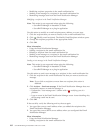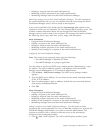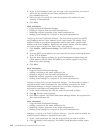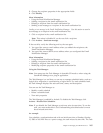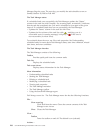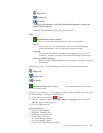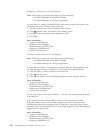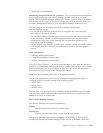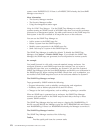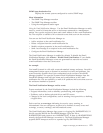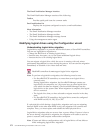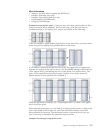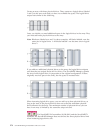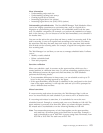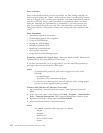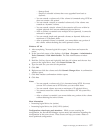creates a new RAIDSEC.LOG. If there is a RAIDSEC.OLD already, the ServeRAID
Manager overwrites it.
More information
v The Security Manager menubar
v The Security Manager toolbar
v Using the management station agent
Using the SNMP Trap Manager: Use the SNMP Trap Manager to notify other
systems running an SNMP console of all SNMP traps that occur on the enclosures
connected to a management station. You add system names to the SNMP traps list.
Each system in the list is notified of all traps that occur on the enclosure.
You can use the SNMP Trap Manager to:
v Add a system to the SNMP traps list
v Delete a system from the SNMP traps list
v Modify system properties in the SNMP traps list
v Send a test trap to a system in the SNMP traps list
The SNMP Trap Manager is enabled by default. To disable the SNMP Trap
Manager, click Actions → Disable SNMP Traps . If you disable the SNMP Trap
Manager, the SNMP traps are generated, but not dispatched to remote systems.
An example
You install SystemA in a lab with a network-attached storage enclosure. You
configure SystemA to send SNMP traps from the enclosure, but you want to
monitor the traps from your workstation, not SystemA. You open the SystemA
SNMP Trap Manager from the ServeRAID Manager and define your workstation in
the SNMP traps list. When running the SNMP console from your workstation, you
are notified of all SNMP traps that occur on the enclosures attached to SystemA.
The SNMP Trap Manager and traps
Traps generated by SNMP include the following:
v Progress information, such as rebuilds, synchronizing, and migrations.
v Problems, such as defunct physical drives and PFA errors.
v Changes to the local configuration, such as adding or replacing a controller.
When
an SNMP trap is generated on an enclosure, the SNMP Trap Manager
connects with each system in the SNMP traps list and relays the trap to these
systems’ SNMP consoles.
The SNMP Trap Manager also logs each trap to a logging file, RaidSNMP.log. If
this file exceeds 200 KB, the Manager copies the file to RaidSNMP.old and creates a
new RaidSNMP.log. If there is a RaidSNMP.old already, the Manager overwrites it.
The SNMP Trap Manager interface
The SNMP Trap Manager consists of the following:
Toolbar
Provides quick-path icons for common tasks.
170 ServeRAID Manager Installation and User's Guide



